Ruins in Athens? Apart from the Acropolis of Athens – what other ruins are there in Athens? Should you even bother to see others, or should you just focus on Acropolis to get “that” photo and be able to check it off your list? That kind of travel I don’t understand – at all.
Checking off things you “should” see, just because you “should” and not because you’re actually interested.
Everyone’s taste is different, of course, but if you’re not interested I feel you should skip it. You’re not going to become a better human being just simply because you’ve seen the Acropolis. If it’s your dream – now that’s a different story – of course you should “check it off”. If you’re short on time you should focus on stuff you really want to see. In my opinion.
What I most of all wanted to see of all the ancient ruins in Athens was the Acropolis, and I did. 5 times to be precise!
Since I spent 2 weeks in Athens I had plenty of time to discover other ruins in Athens, but still I didn’t get to see everything I’d wanted. Some places, that I hadn’t even known existed, I had to put on my bucket list for next time.
Because there will surely be a next time! I loved Athens!
Just outside my accomodation, I had plenty of ruins, thus the location was the best! Here are some of my favourite ruins in Athens:
Hadrian’s Library
Hadrian’s Library was built in the year 132 AD by the Roman emperor Hadrian (obviously!). Just like the name reveals it was a library, fully equipped with reading rooms and lecture halls. During the Heruli invasion in 267 AD, the library was ruined, but 200 years later the rebuilt it.

Today it’s mostly a local hangout for random cats… Perfect place for me, that is – the Crazy Cat Lady!


Ancient Agora
Other ancient ruins in Athens close to my quarters was the Ancient Agora. This area is huge and here you’ll find buildings like the Temple of Haephestus and the Stoa of Attalos. There’s also the beautiful church Holy Apostles of Solaki from the 10th century.
Agora is a recurring word, which in classical Greek means “public place”, or “square”. The Agora was the heart of the city – a central place with a lot of commerce.
The Ancient Agora was built during the 6th century BC, and is said to be the greatest example of a Greek agora.
500 BC… That is truly ancient!
[dropcapcustom_class=”whbr”]The Temple of Haephestus, dedicated to Hephaestus the God of blacksmiths and metalworkers, stood ready 416-415 BC. This temple is unique, in that it’s the only building on the agora, along with the church, which is basically intact.[/dropcap]
One of the reasons for it still being basically intact is said to be that it during 1200 years, until 1834, was a Greek-Orthodox church. Thus there have been people during all the years taking care of this temple/church, which means it never had to fall into decay as the other buildings here.






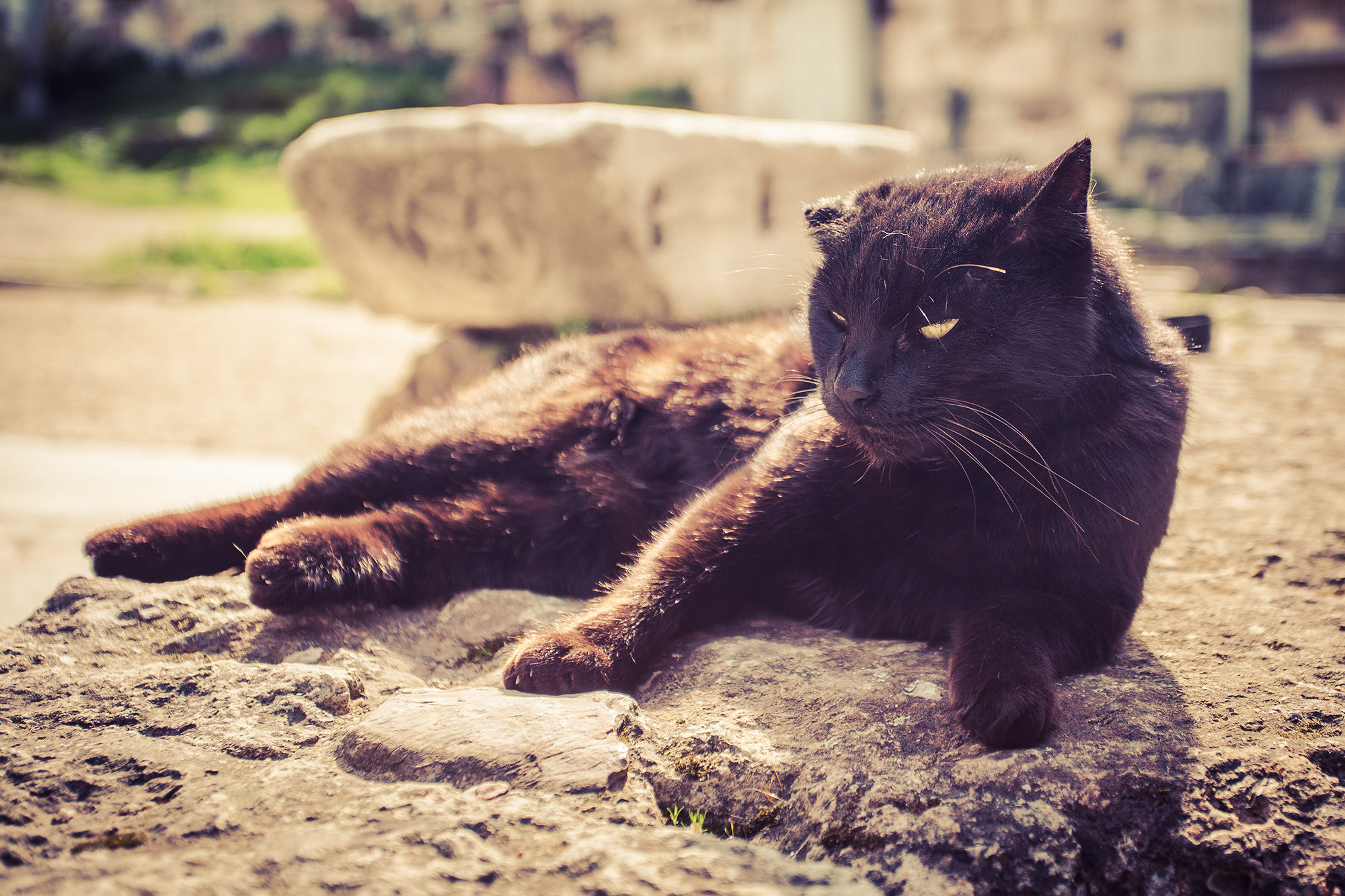

Holy Apostles of Solaki


The Stoa of Attalos was a stoa, exactly as the name implies. So what is a stoa? In Ancient Greece a stoa was a covered colonnade, surrounding the agora. This stoa in particular was named after King Attalos II of Pergamon. Attalos II had received an education from the philosopher Carneades, and he wanted to thank the city of Athens. Therefore he gifted this building to the city. This was around 150 BC.
However, this is not the original building standing here looking awesome, since it was ruined during the Herulian invasion in 267 AD. The building of today was reconstructed between 1952-1956, but it is truly a magnificent building, regardless. If you’re not impressed by this one, you’re probably hard to impress over all!
I was of course dang impressed!



Roman Agora
The Roman Agora is much smaller than the Ancient Agora, but here are still several different ruins and buildings, of which the most beautiful is the Tower of the Winds (below). Although that is of course my opinion 😉 . The clock tower’s original name is Aerides and is considered the world’s first meteorological station. Completely built from marble, which means it reflects the sunset in an amazingly beautiful way, presumably this was the idea. Unfortunately the Roman Agora is not fully excavated yet, but I don’t know if it’s ever going to be, or what is going on…
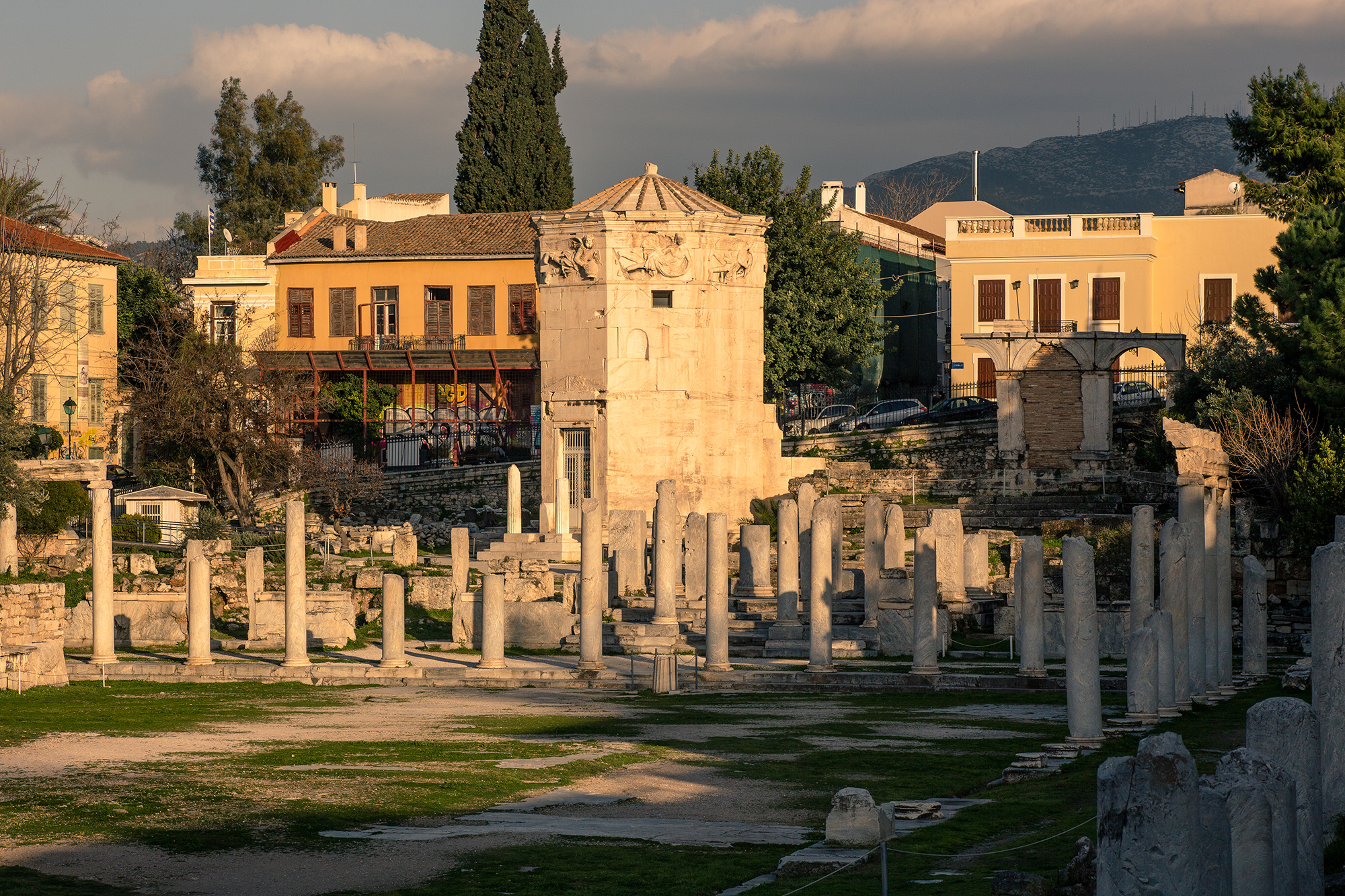
Kerameikos
The cemetery Kerameikos is one of the most important, but least visited archaelogical places of all the ancient ruins in Athens. It’s a cemetery, yes, thus of course I had to visit it. An ancient cemetery – how could I miss out? 😛
The name Kerameikos comes from the fact there were a lot of ceramics workshops in the area – Kerameikos means just that: “ceramics” in classical Greek.















As you can see above the weather in Athens was quite unpredictable. Kind of like Iceland come to think about it. One minute the gazing sun and it’s warm, the other freezing cold rain, so gloves and hat come on! Followed by cold and windy, to be replaced by the shining sun! And it just kept on going… over and over…
Temple of Olympian Zeus
The Temple of Olympian Zeus, also known as Olympieion, is of course dedicated to the God Zeus. The reason for it being named the Olympian Zeus is that the name would strengthen his position as THE BOSS over the other olympian gods.
The building of the temple started around 520 BC, but it wasn’t until Emperor Hadrian (yes, him again!) showed up it was finally finished in 132 AD, about 600 years later. The temple, consisting of 104 columns, was under the Roman Empire known as the biggest temple in Greece.
Today there are only 15 columns left standing. The last time one of the columns fell was during a storm in 1852, and it is still laying there, on the ground. The temple was an incredibly powerful place and an incredibly powerful construction – incomplete or not.
It’s so hard to take in from a photo how large these buildings actually are. How huge these columns actually are! You feel like a tiny ant trying to gaze up to the top… I just got dizzy. Same thing in Egypt. You’re just so insignificant compared to these marvels…



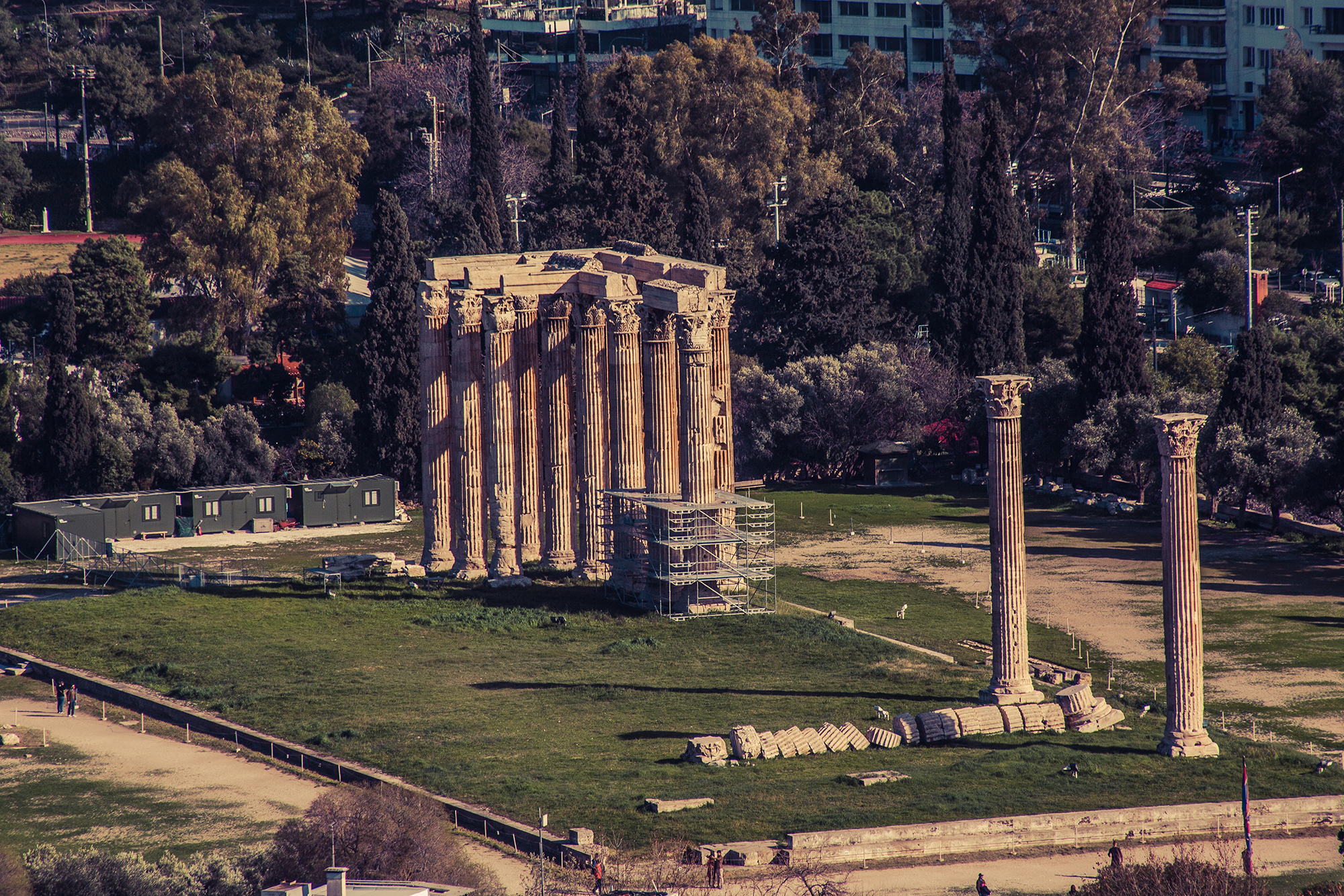




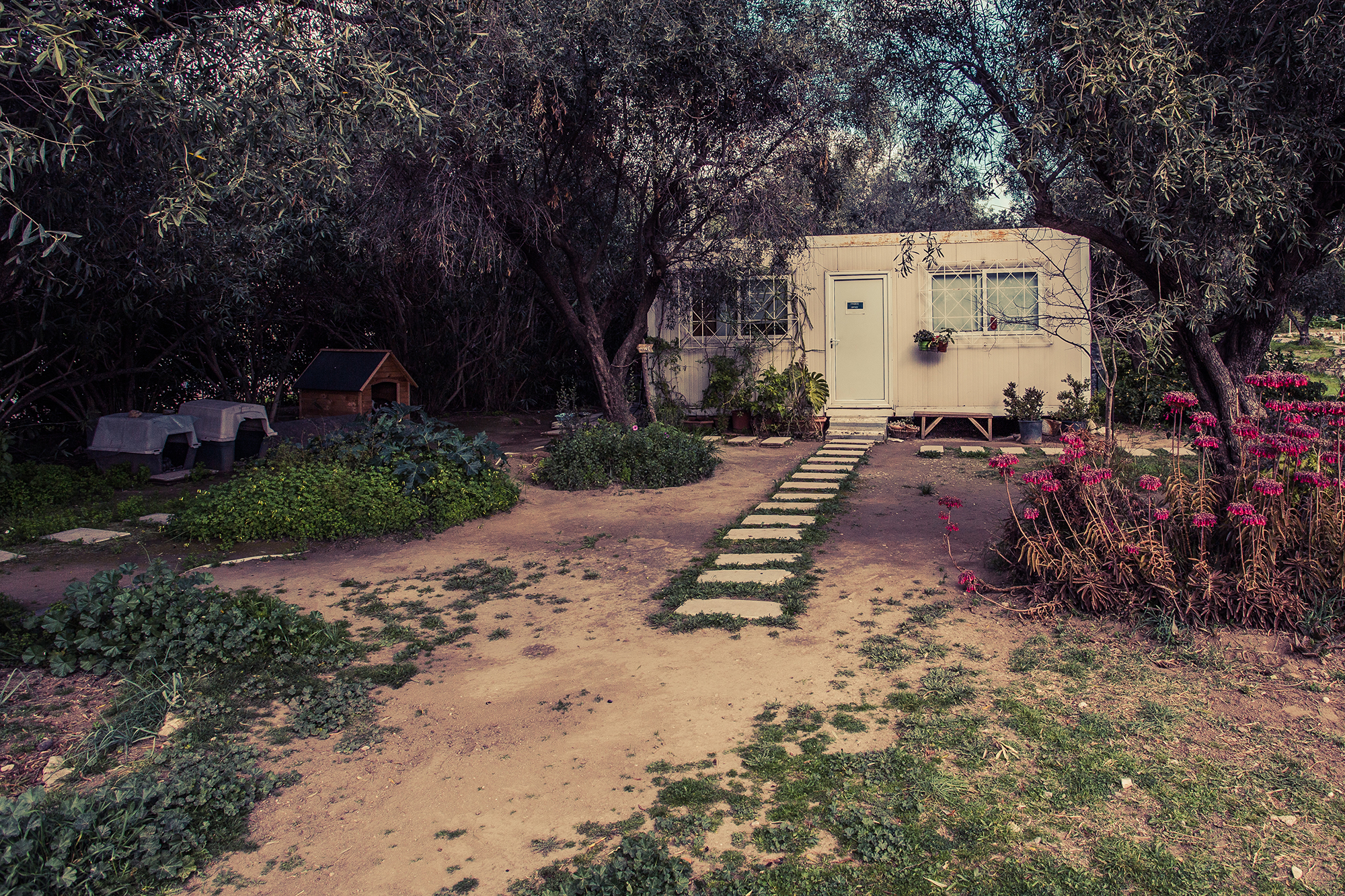


In the year 132 the Hadrian’s Arch (above) was built, and it served as a gate between the city of Ancient Athens and the Roman part of Athens.
Panathenaic Stadium
Oh, yes, the person extremely uninterested in sports did pay a visit to the Panathenaic Stadium, which is the original olympic arena. During the Classical era this arena was used for the panathenaic games, and the benches were then originally made of wood. Herodes Atticus had the stadium rebuilt and installed lovely marble benches around 140 AD.
With time people forgot the stadium, and it fell into decay. In time for the restart of the Olympic games in 1896 it was excavated, and restored. So, even though I wasn’t sitting on any of the original benches from 2000 years back it was still cool!
The place was exuding such powerful energy!
As I said, I’m very uninterested in large sports events. The only times I’ve felt interested in these hysterical insanities is when I’m upset and protested against how one could ruthlessly kill homeless animals or forcefully displace human beings simply because one is building a nice new arena. Sports events are so yikes… and overestimated!
Despite this the feeling of sitting there on the Panathenaic Stadium with such rich history felt incredible.



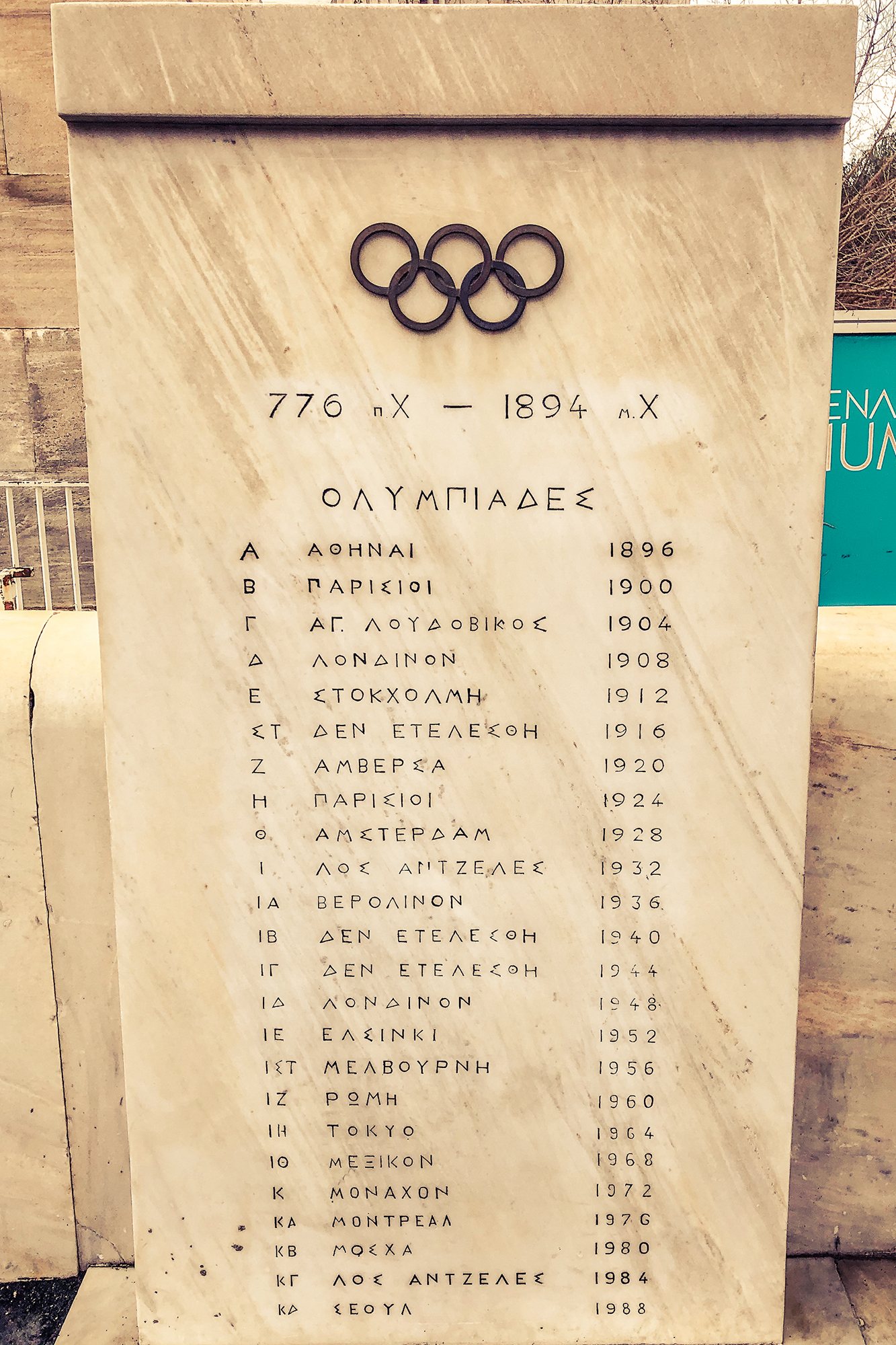

Socrates’ prison
The philosopher Socrates, who lived 470-399 BC, is one of those considered to be the father of western philosophy. What we know about him comes from written works, written by his pupil Plato and Plato’s pupil Aristoteles.
According to Plato, Socrates was sentenced to death for random and peculiar accusations; being an atheist and sophist, as well as having misled youth regarding obeying laws and principles. Well, back in the day one could be sentenced to death for anything it seemed! And almost nothing!
The opposite of today when you can get acquitted for basically anything…
Awaiting his sentence Socrates is supposed to have been caged in this dungeon. As I was putting my hand on the mountainstone and its freezing cold surface I could only imagine how cold it truly was inside the dungeon, where the sun never shined. The thought alone of sitting there in the freezing cold and the damp darkness sent chills down my spine.
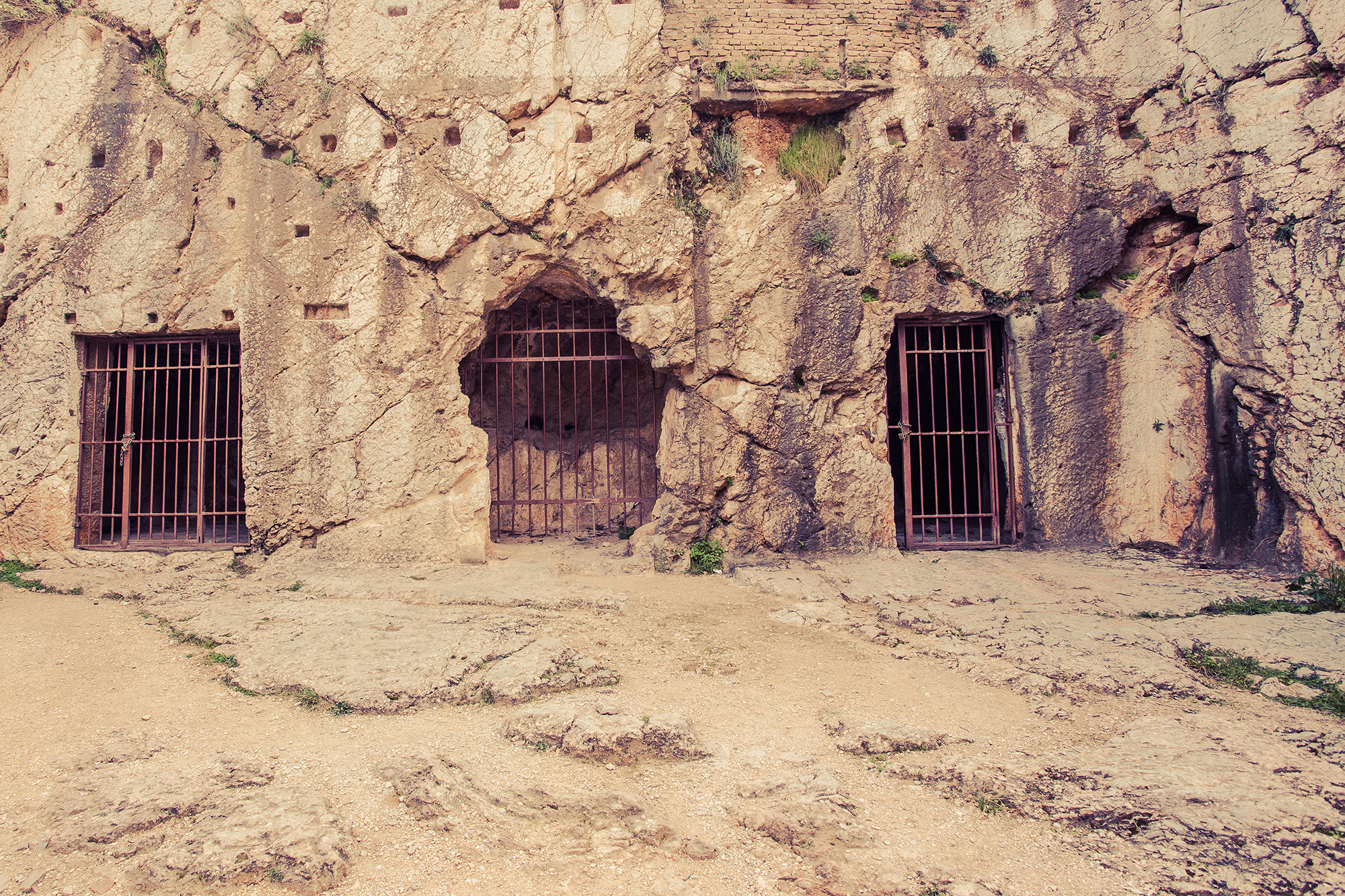
Of course there were plenty more ruins in Athens, and lots of them I didn’t get to see, but I can’t keep ranting all day… This was just a taste of Athens! If you’re interested in ruins and history, you should definitly go to Athens. That is my advice. I don’t think you’ll regret it!
My next ruin city will have to be Rome! Right?
Have you been to Athens? What ancient ruins in Athens did you visit? Please leave a comment!












Please leave a comment